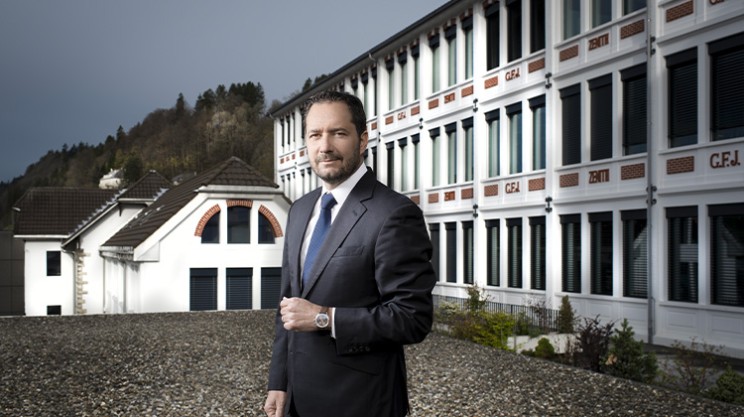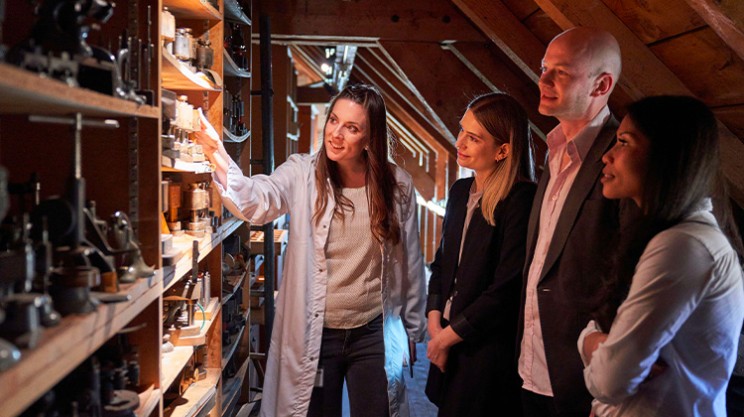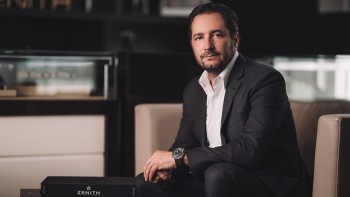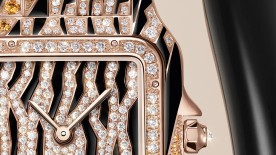It was the job description from hell. When Julien Tornare took over at the head of Zenith in the spring of 2017, he had a mountain before him. The newly minted CEO had to relaunch the brand, remotivate troops, retain talent, review product strategy, rethink brand positioning, revise distribution, reactivate innovation and look beyond the El Primero movement. This was about turning the page on everything. Everything except Zenith’s heritage and spirit: the two pillars on which Julien Tornare patiently rebuilt the brand.
Two’s company
Not everyone thought he was the man for the job. Tornare was pure Richemont (17 years at Vacheron Constantin), a group with a different corporate culture to that of Zenith’s proprietor, LVMH. He was tapped by Jean-Claude Biver, who oversaw the group’s watch business: an appointment that was both a blessing and a curse. Having Biver’s backing opens a world of possibilities but stepping out of the shadow of such a commanding figure is no easy task. For the first 18 months of Tornare’s tenure, there were questions as to who was actually in charge and whether Jean-Claude Biver wasn’t really the one pulling the strings.

Hands-on
The reality lies somewhere in between. In these early days, the impetus came from Biver while Tornare learned, implemented and took the punches, his communicative energy and enthusiasm never flagging. The man is a grafter in the noble sense: down on the ground, hands-on, a hard worker. Every single sale has to be earned. He met with collectors, deep-dived the archives. A long, slow and necessary process. Julien Tornare took the head of a company that was turning over barely CHF 80 million (twice that today). A giant with feet of clay. A venerable name but a drop in the market ocean.
He spent the next two years putting the brand back on an even keel. After starting out in the shadow of Jean-Claude Biver, who eventually stepped back from Zenith to reboost TAG Heuer, the new CEO benefitted from El Primero’s 50th anniversary in 2019. But events conspired against him when Covid sent the world into lockdown. Tornare took advantage of this time out to refine his strategy and, rather than push Zenith at the expense of the El Primero, chose to drive both and make them equally strong.

Inside and out
In doing so, he steered clear of the trap other luxury brands have fallen into, namely highly complicated, exclusive products, stratospheric prices and red-carpet ambassadors. Instead, he rolled out a horizontal management structure at the brand’s Le Locle manufacture. He made staff proud to work at Zenith. He spent as little time as possible behind a desk and as much as possible in the field. He was one of the first to divide collections equally between men’s and women’s – ultimately doing away with gender segmentation altogether.
Startup or not startup
Tornare’s approach has been described by many as startup culture, except the startup in question is part of a group worth €80 billion with phenomenal strike power. This meant Tornare could plan for the long term, delivering results not within 12 months but three years – even four, “thanks to” Covid.
Another benefit: LVMH pooled R&D with TAG Heuer. These shared resources enabled Zenith to propose some highly technical products, including dual-escapement movements which the brand probably wouldn’t have been able to develop or produce alone.

New ranges
Most of all, Julien Tornare brought his vision to bear on a creative product strategy. Whereas his mentor Jean-Claude Biver had initially bet on a revival of the ultra-classic Elite, Tornare took a different route with the introduction of two sports collections, Defy and Chronomaster. With the El Primero name nowhere to be seen, he decided to offer revised and certified new old stock 1970s El Primero for sale online. Meanwhile, the Skyline and Revival collections surfed the Seventies sport-luxe trend, with more than a hint of Genta. Not forgetting the return of the Pilot line (Zenith is the only brand authorised to feature the word “Pilot” on its dials).
Repositioned
Today’s Zenith is a category apart: old but perceived as young; making its own movements but affordable (although prices have increased of late). The brand is in good health and well positioned. Its watches don’t yet command high prices on the pre-owned market – which is also what makes it accessible. In fact average customer age has fallen from 46, when Julien Tornare took the reins, to 37. Now this 50-year-old is leaving for pastures new at TAG Heuer.






